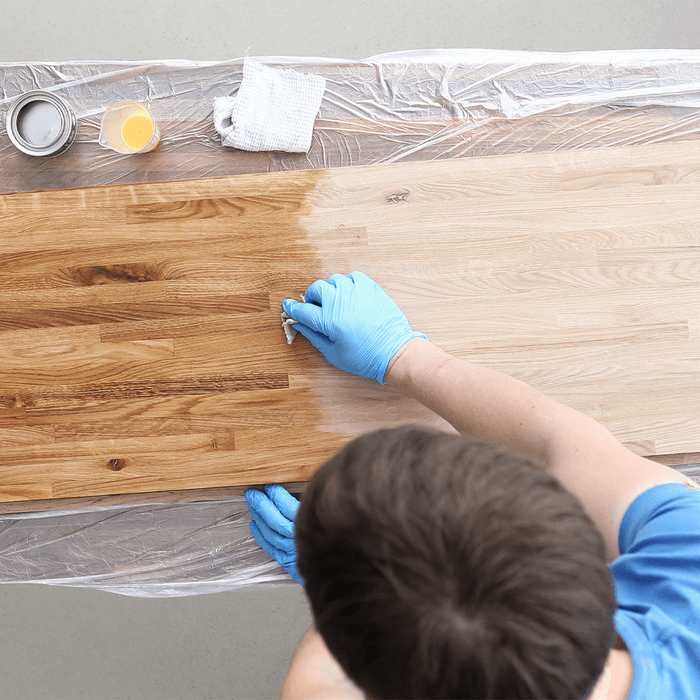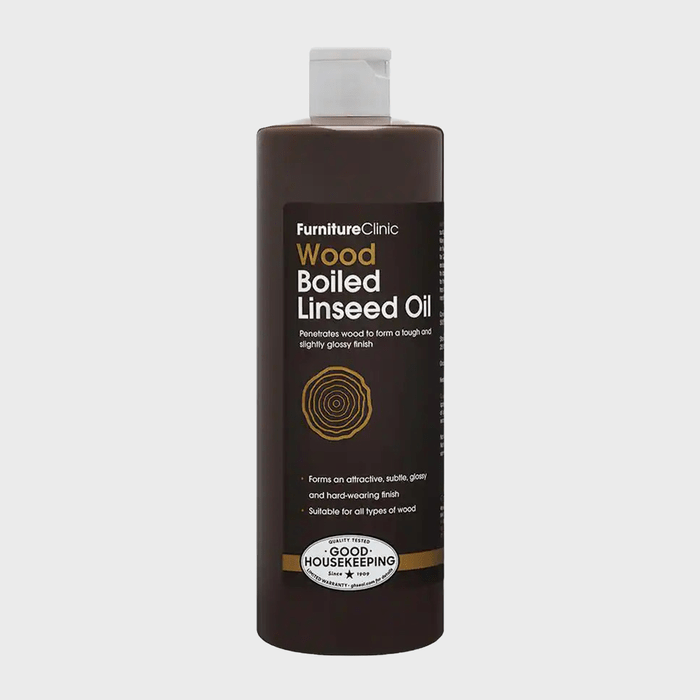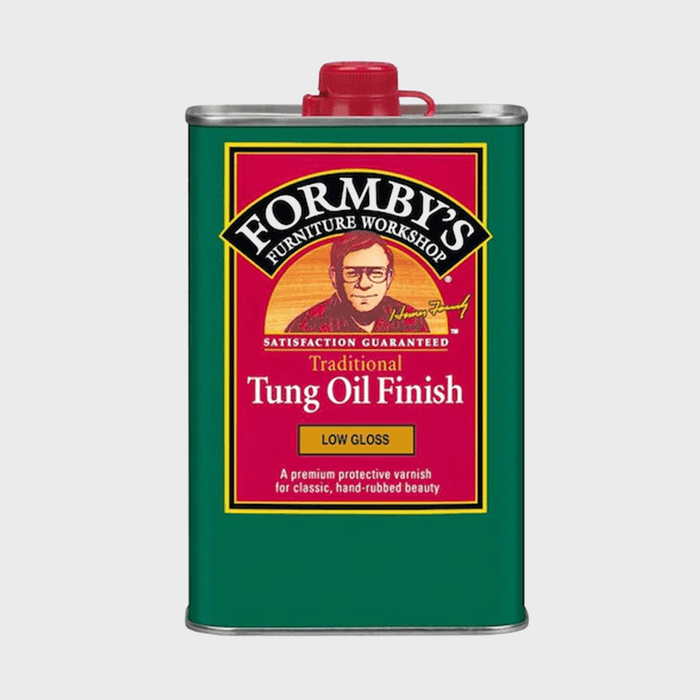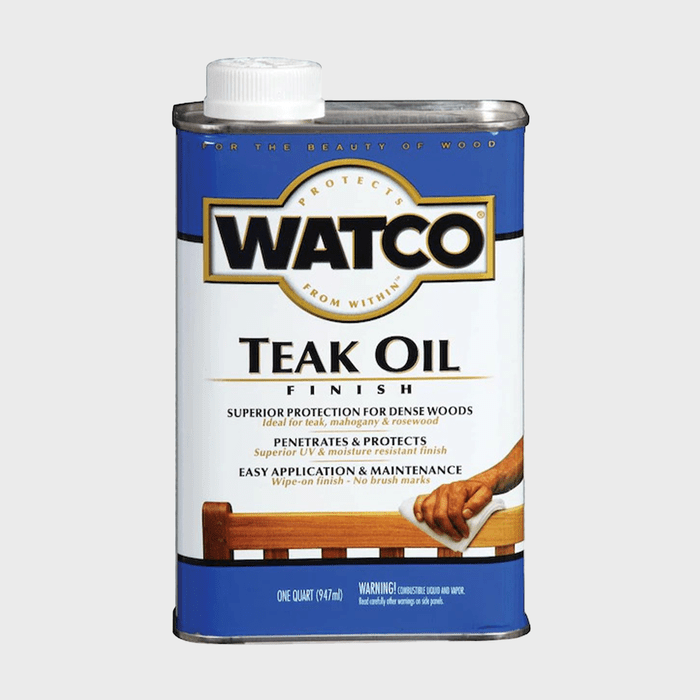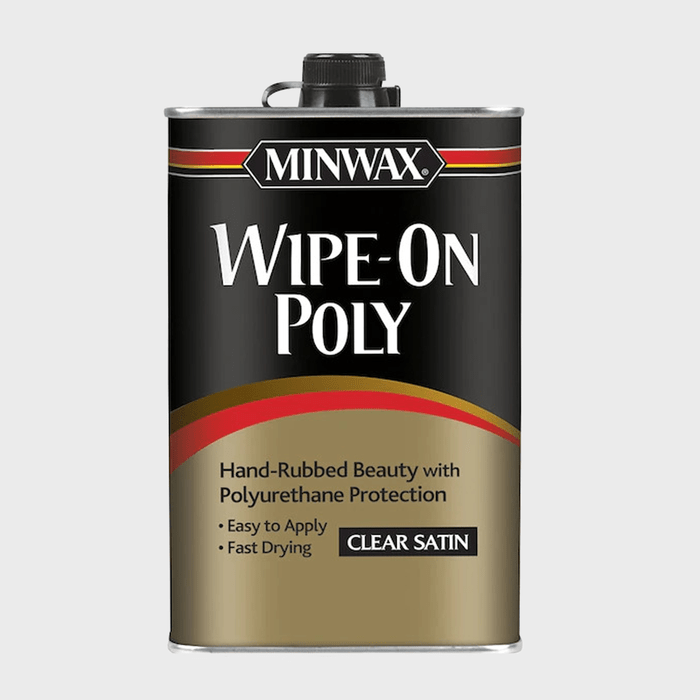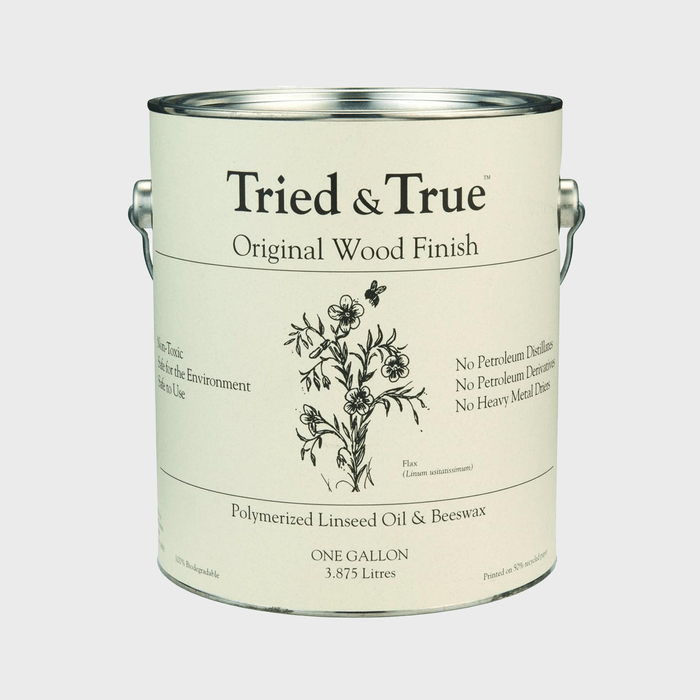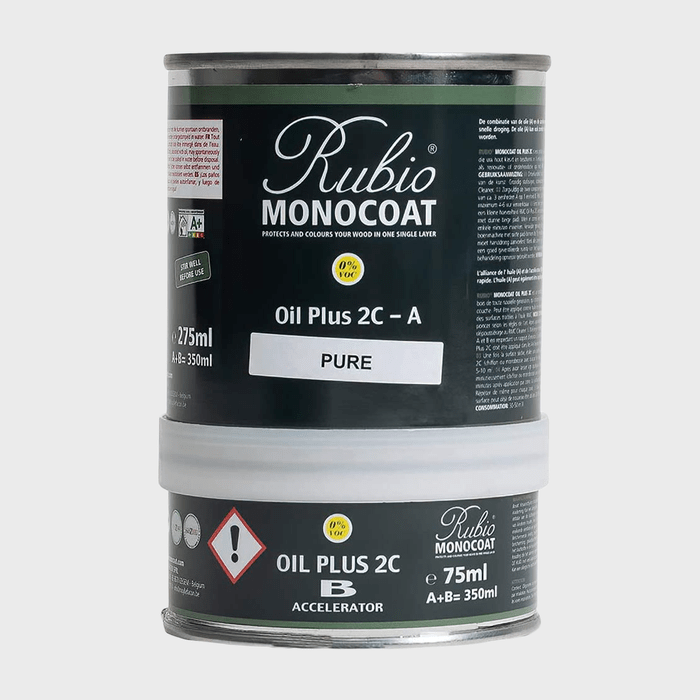


Anyone who has ever built themselves a piece of furniture, or refinished a piece discarded on the curb, knows the correct finish can make or break the project.
Wipe-on finishes are forgiving, easy to use and leave beautiful results, perfect for craftsmen old and new. Wipe-on finishes come in lots of varieties: oils, waxes and urethanes, as well as products that combine them with other waxes, stains or dryers.
Knowing the strengths, weaknesses and ideal applications of each wipe-on product is crucial for achieving the perfect look and feel to your project. These are the six wipe-on wood finishes I rely on the most.

Linseed Oil
Linseed or flaxseed oil is one of the most beloved wood finishes in the world. It penetrates deep into the wood fibers to protect against minor surface scratches and changes in humidity. It’s easy to apply and maintain, and delivers a soft, satin finish that brings out the natural grain and color of the wood.
When researching linseed oil, you’ll find three types of wood finishes; raw, boiled and polymerized. Raw linseed oil, in its natural form, is somewhat impractical as a furniture finish due to its lengthy dry times. This is where it gets confusing…
Both boiled and polymerized linseed oil are marketed as “boiled” linseed oil. Boiled linseed oil isn’t only boiled; it’s often combined with potentially toxic chemicals and metallic driers to speed up the drying process.
But polymerized linseed oil is basically boiled linseed oil without the chemicals! It’s eco-friendly and food safe, but without the long drying times. Both have their places in woodworking, but it’s important to know which you have.
Always examine the bottle of “boiled” linseed oil. If it carries a warning from the state of California regarding cancer or birth defects, it’s probably full of chemicals and driers. If the bottle of reads “zero-VOC’s” or “food safe,” its actually polymerized, and my preferred choice!
My favorite is Furniture Clinic Boiled Linseed Oil.

Tung Oil
For centuries, tung oil has been extracted from the seeds of the tung tree and applied to protect hardwoods from the elements.
Tung oil is a favorite penetrative wood finish among many woodworkers for projects like furniture, musical instruments and toys. Not only is it moisture and mold resistant, but it doesn’t darken or amber with age. It can be used on bare or stained woods, bamboo, even stone and concrete.
Most tung oil brands recommend up to 60 minutes between coats. As coats are added, the gloss levels increase, leaving a beautiful and warm looking finish. Down the road, when the finish has lost its luster, you can simply reapply a rejuvenating coat of tung oil to keep the project looking great for years!
My pick in this category is Formby’s Tung Oil Finish.

Teak Oil
Debate continues in woodworking circles about what exactly teak oil is. The most agreed-upon answer: It’s a mixture of tung and linseed oils that contains polymers to give it a stronger and harder finish.
Either way you look at it, teak oil is ideal for interior or exterior use on dense woods such as rosewood, mahogany or maple. Because of its outstanding UV and moisture resistance and its aversion to cracking, chipping and peeling, teak oil has long been used on yacht and boat decking, wooden patios and handcrafted outdoor furniture. I love watching a project come to life with the warm rich glow that teak oil has long been known for. My pick here is Watco Teak Oil Finish.

Polyurethane
Wipe-on polyurethane (poly for short) is the go-to finish for many who are new to woodworking. Its ease of use and stout durability make it perfect for finishing interior furniture and doors, trim work, lamp bases or wooden handles, even if stained.
Wipe-on-poly is a more thinned out version of standard polyurethane wood finish. Though it’s easier to apply, it takes longer to build up a thick protective finish. It takes roughly three coats of wipe-on poly to equal the buildup from a single coat of brush-on. Its foolproof application plus amazing urethane durability continues to make wipe-on poly a top-notch choice. I like Minwax Wipe-on-Poly.

Hard Wax Oil Finishes
These days, it seems like everyone has their favorite hard wax oil finishes. These tend to be combinations of oils and waxes that penetrate into the wood to seal and protect it.
Hard wax oil finishes are usually devoid of toxic chemicals or driers, meaning they are environmentally and food safe. Originally intended for use with cutting boards, butcher block countertops and fruit bowls, these products also work great for furniture, toys, picture frames or turned creations. My favorite hard wax finish is Tried and True.
Give a hard wax finish a try. It will be easy to see why there’s so much buzz around these products.

Rubio Monocoat
You can’t talk about easy-to-apply, beautiful looking finishes without mentioning Rubio Monocoat. It’s a proprietary line of state-of-the-art wipe-on oil finishes made for wood floors, furniture, countertops and more.
Due to its molecular bonding technology, Rubio Monocoat provides long lasting and durable protection with a single coat. It’s also available in more than fifty shades and colors. Best of all, Rubio Monocoat oil is made of natural ingredients. It doesn’t contain water or solvents and it’s 100 percent VOC free.
